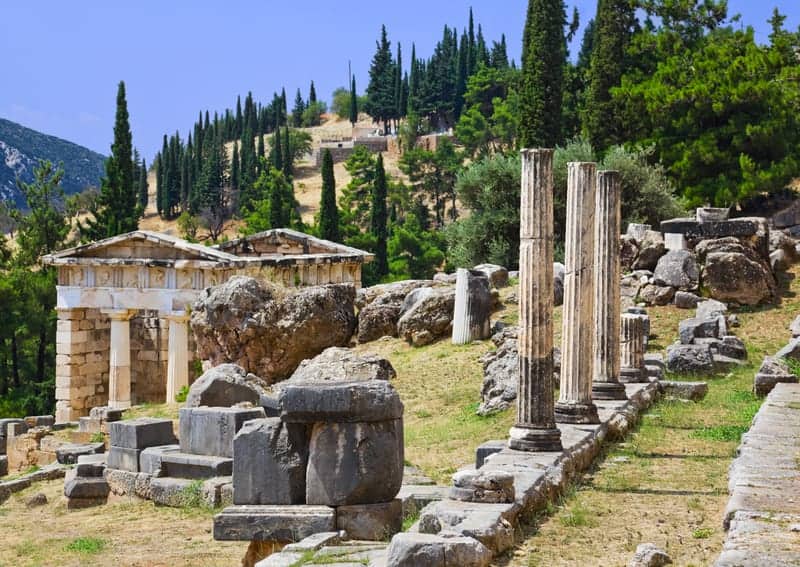Introduction. Religious rituals and shamanism, the ancient roots of hypnosis

The ability to fall into trance, which in its nature is similar to hypnosis, is a fundamental human trait that has existed as long as humanity itself. The belief in the “supra-natural”, and communication with gods, dates back to ancient religious rituals and shamanism.
Healing through trance and contact with the divine was already practiced in the prehistoric societies of the Neolithic age. The “medicine man” or shaman would induce a trance state in the indigenous people. The role of the shaman was to connect participants with ancestral spirits or gods core practices still echoed in modern-day shamanism.
These traditions also influence today’s therapeutic methods. The German Roots of Hypnotherapy in Dubai build on these ancient principles, integrating trance-based healing with scientifically grounded techniques to support mental and emotional well-being.
In the below article we shade light on the ancient religious rituals and shamanism fro which hypnosis derives.
Division in “scientific” and “alternative” medicine
We consider Ancient Greece the birthplace of Western culture. We can trace today’s achievements in philosophy, mathematics and the natural sciences to their roots in the ancient Greek city-states, especially to Athens and its colonies.
Also, Hippocrates, a Greek physician, originated evidence-based medicine, a science relying on observation, facts, and causality. We refer to him as the “Father of Medicine” today. However, in antiquity, there also existed a branch of medicine based on herbal treatments, healing baths, and the connection with the divine. Such healing methods enjoyed the same status and respect as Hippocratic medicine. Since then, the division into “scientific” and “alternative” medicine continues until modern days.
Today, despite the overwhelming position of scientific medicine, “alternative medicine”, such as herbal therapy, balneotherapy, meditation and hypnotism, still appeals to the broad audience.
Ancient rituals and hypnosis
We can trace the history of hypnosis back to the roots of our species. In the temples of antiquity people were put into a trance using singing, dancing and sometimes by using hallucinogenic herbs.
The timing of entering the temple was important in those times, because visitors had to go through a preparation phase. People would go through purification rituals, sacred chants, meditation, baths and make sacrifices to the gods. The visitors, known as seekers, came to the healing temples to made contact with the gods or to cure their mental or physical illnesses.
Priests in India still perform some of these traditions to treat ill health or to obtain protection from “bad” luck by connecting with the gods.
Various texts from many ancient cultures describe practices that scholars considered hypnotic. They used these practices for healing, divination, and spiritual growth.
Trance in Ancient Egypt
A papyrus dated to the 3rd century A.D., found at Thebes, describes a divination ritual an early example of ancient texts referencing hypnotic practices. In this ritual, young slaves were put into a trance by the flickering flames of an oil lamp to predict the future. This is one of many examples of ancient cultures using a trance state for divination and shamanic rituals.
Such practices were not only for prophecy but also for spiritual connection and restoration shaman healing. The flickering light served as a tool to guide the mind into altered states of awareness a technique still used in some modern hypnotic and shamanic traditions. Throughout history, people have harnessed these states for healing, insight, and transformation.
Religious rituals, trance and hypnosis in Ancient Greece

In the antique Greece people used to pilgrimage to the temple of Apollo in Delphi for consulting this oracle. Ancient Greeks considered the Delphi oracle an important part of their culture and religion. They considered it a powerful way to gain insight and knowledge from the gods. Delphi was a holy place for all of Greece and no important political decision was made without consulting the oracle. The priestess called Pythia would sit on a high tripod, gaze into a bowl of spring water and reach a trance-like state. In this state, she would speak in mysterious sentences predicting the future.
In addition to political decision-making, individuals also made pilgrimages to Delphi for healing and to gain contact with the gods. People would seek advice and guidance for personal, family and business matters, or for health issues. The artifacts of votive offerings found at Delphi proved the healing effect of such spiritual journey.
The Delphi oracle was created in the 8th century BC and the last recorded visit took place around 395 AD.
Shamanism and trance
Shamanism is an ancient practice that has been studied by anthropologists and religious scholars around the world. One of the most influential works on shamanism is Mircea Eliade’s book, “Shamanism: The Archaic Techniques of Ecstasy”. In this book, Eliade explores the variations and similarities in “religious specialists” across cultures. He reveals the shamanic specialization in understanding, managing, and shaping consciousness and emotions.
Continuity trough, time, space, and culture
Eliade found a wide range of continuities and parallel beliefs and practices across cultures separated by distance and time. According to him, shamans differ from priests and other religious leaders in several ways. Shamans across the world share certain characteristics. They are able to experience “ecstasy,” an altered state of consciousness, known as “soul journey” or “soul flight”.
Shamans. The community leaders

Shamans practice divination, diagnosis, and prophecy, and serve as healers and spiritual guides and leaders in their communities. The shamanic ceremonies are often referred to as “archaic techniques of ecstasy”. During such ceremony, the shaman intentionally alters states of consciousness in oneself and others falling into hypnotic trans. To reach these states, shamans use different methods. This could be the use of psychedelic herbs or hypnotic drumming, often in combination with extreme forms of physical exertion. Through these techniques, shamans are able to access a “realm beyond the physical world”. They bring back to the community spiritual wisdom and healing.
Myths and legends in shamanism
Because shamans know the local myths, they often recite mythological stories during ritual treatments and ceremonies. They do this even when both the shaman and the participants of the ceremony are in an altered state of consciousness. People often use these stories as a means of providing guidance and wisdom to the participants during their healing journey. The myths and legends told by shamans usually have a symbolic meaning. He interprets them to help the participants understand their situation and overcome their challenges. The use of storytelling and myths in shamanic practices is a widespread phenomenon across many cultures.
Religious rituals, shamanism and hypnosis. The evolutionary perspective
From the evolutionary perspective, the ability to enter trance states, may have provided our ancestors with a survival advantage. By entering trans and activating the “six sense” they were able to access the information not available to them in their conscious state. In the trance they could get knowledge about the location of food, water sources, the presence of predators, or information about potential mates. Being in the trance state made our ancestors believe they were communicating with the divine, providing them with the conviction of guidance and protection. The shamanic rituals, which include the use of trance states and storytelling, have been passed down through generations. Such practices became an integral part of many cultures. It is plausible that the shamanic tradition has been maintained because of benefits such as guidance, protection, and healing to the individuals and communities.

DR. GREGOR KOWAL
Senior Consultant in Psychiatry,
Psychotherapy And Family Medicine
(German Board)
Call +971 4 457 4240


